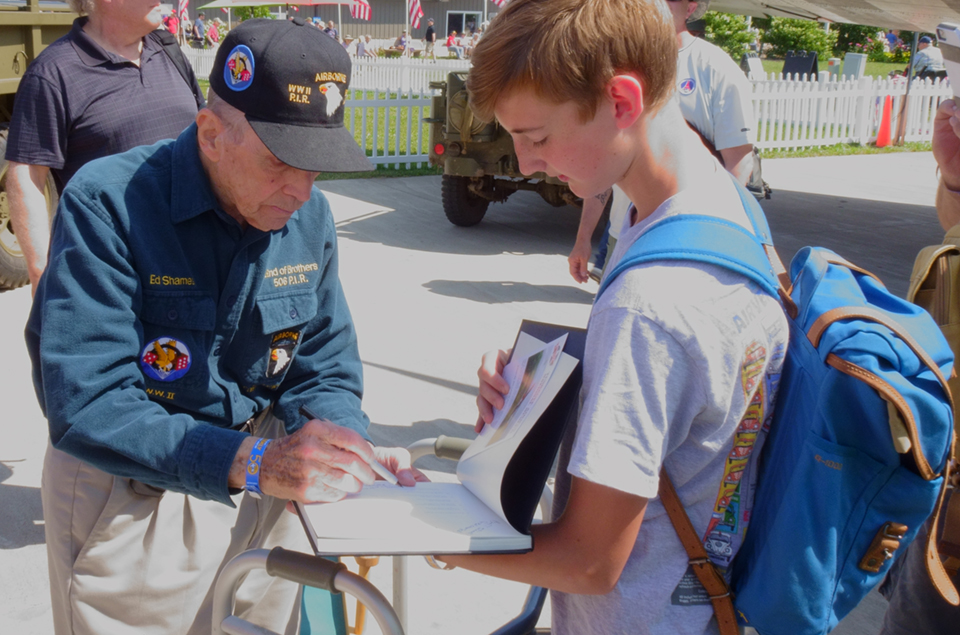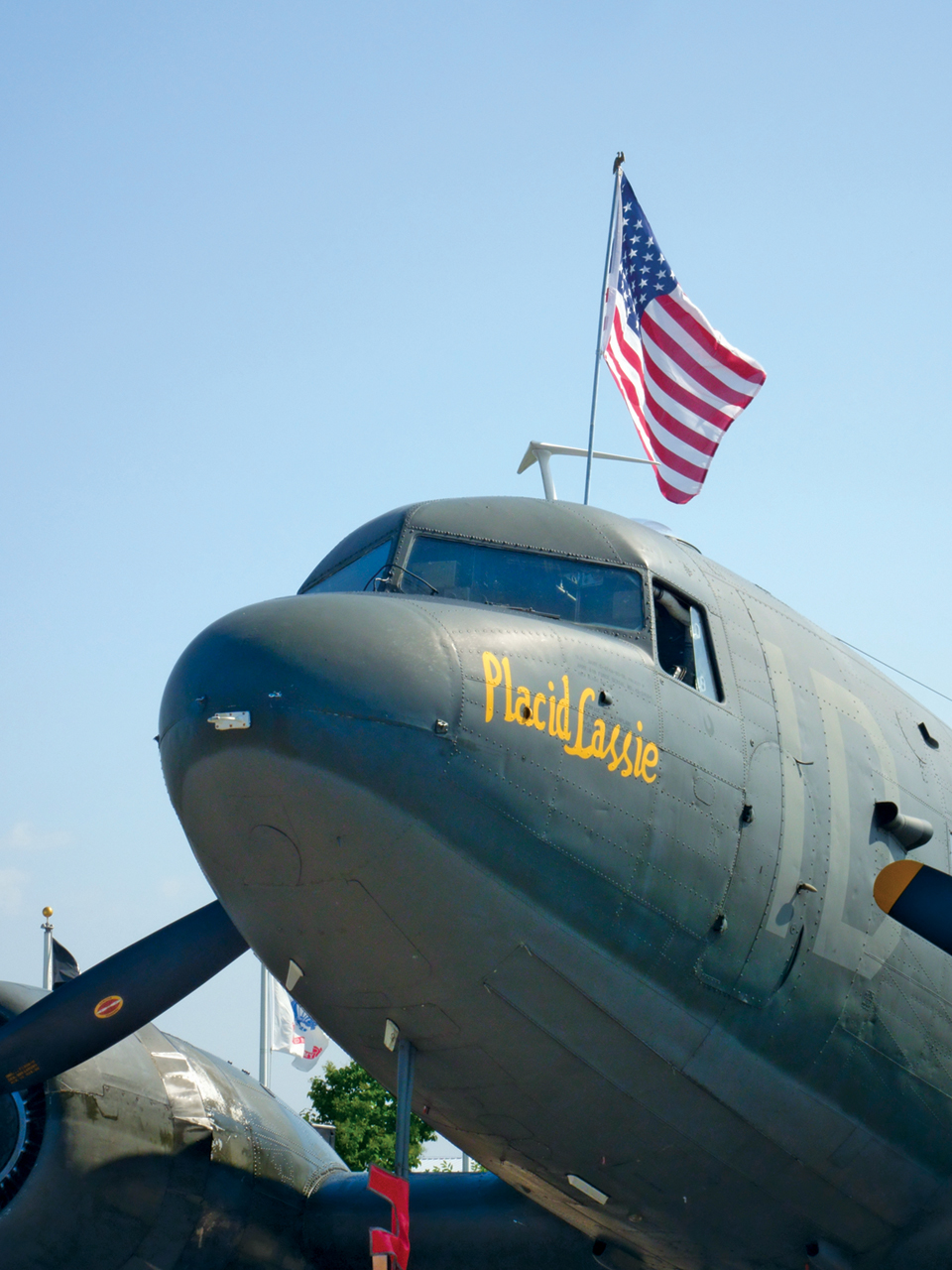Placid Lassie, and Much More
By Frederick A. Johnsen
July 28, 2019 - It was billed as a program about the C-47 Placid Lassie and the recent 75th anniversary of D-Day. But Normandy veteran Ed Shames quickly captured the hearts of the audience with his sometimes salty, sometimes sweet, first-person account of parachuting into Normandy in 1944. He was spontaneously applauded several times by the crowd of several hundred who gathered for a Friday Warbirds in Review session.
Ed told the crowd, "I was responsible for the sand tables for the whole battalion," explaining that sand tables were recreations of French drop zones to give the paratroopers a preview of where they were assigned to land. But, he added, the C-47s carrying his outfit scattered the troops over a wide area.
Just before the C-47s took off from their English bases, Ed was told to switch aircraft to make room for a war correspondent. The last-minute change meant Ed was not carried on a manifest. "Today I still don't know what plane I was on," he said.
About the flight, Ed said, "I was nervous." Distant flak over the English Channel was ineffectual, he recalled, but once the C-47s reached the continent, "all hell broke loose." Ed likened the scene to a fireworks show in an amusement park. On the green light signal in the back of the C-47, the men jumped, their static lines automatically deploying their parachutes as the men stepped into the slipstream. Ed said they carried extra ammunition and supplies because they would initially be on their own.
"It took me about 90 seconds to come down," Ed said. "It felt like three hours." He told the AirVenture crowd that he could hear bullets and shrapnel tearing through his parachute as he descended in the Normandy night. He said he landed amongst cows.
"We were scattered all over the place," Ed said, "but that wasn’t such a bad thing." He said the Germans mistakenly believed the far-flung Allied paratroopers represented a much larger invasion force than their numbers actually meant. "It scared the hell out of them and they ran … they ran fast," he told his appreciative audience.
Ed, then a staff sergeant, rounded up about 18 paratroopers and began moving to the northwest according to prearranged plans. But they did not know where they were, so he said he figured a local farmer would know the lay of the land. "I knocked on the door like it was Sunday morning." Surrounded by his troops, some in blacked-out face camouflage and all of them looking ferocious, Ed waited as the French farm couple answered the door. The wife screamed at the sight of the armed warriors, and Ed tried to quickly quiet her while he asked for directions.
As he called out the names of French towns, Ed watched as the Frenchman pointed to where they were. When Ed said "Carentan," the French farmer tapped the ground, signaling they were standing in Carentan. "Oh my God," Ed said has he recounted the discovery, which was a shock to him and his men because they were told a strong German garrison occupied Carentan. "Let's get the hell over the hill right now," Ed said he told his troops.
He said it took an hour and a half for his team to walk from Carentan to the bridge they were told to hold. Ed jumped into Normandy as a staff sergeant. Not long after, he told the AirVenture crowd, "I was made a second lieutenant on the spot."
Sharing the panel discussion with Ed were three pilots of C-47s that participated in the 75th anniversary flyover and airdrop sorties this June. Eric Zipkin, who flew the Normandy veteran C-47 Placid Lassie, said the modern-day crossing of the North Atlantic was less challenging than that faced by World War II aviators. "Our job was made a whole lot easier by 75 years of technology," he told the crowd.
Doug Rozendaal, one of the pilots of the celebrated C-47 That's All, Brother for the 75th anniversary events, said, "What we did had nothing to do with what they did," because today's crews had the benefit of more experience and avionics. The young WWII C-47 pilots had more courage to do their tasks, he said.
Zipkin quoted one of the crew members on the 75th anniversary flights, who said, "We're flying with ghosts."
"Especially when you're flying across the Channel," Zipkin added.
Fifteen C-47s departed the United States for Europe in May to participate in Normandy flyover activities. They were joined by eight more C-47s from foreign countries. After the D-Day commemorations, some of the C-47s flew to Berlin for commemorations honoring the completion of the Berlin Airlift in 1949.
The C-47 looming large over the discussion panel was Placid Lassie, a genuine D-Day veteran with subsequent history with companies like West Coast Airlines and Aerodyne in Washington state.




